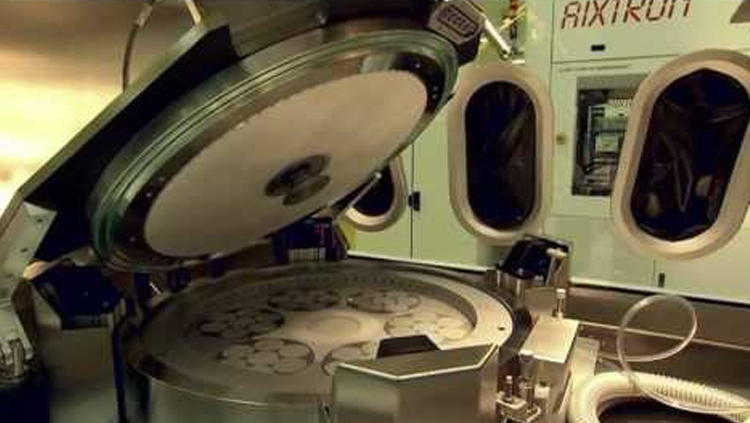Polaritons promise more efficient LEDs
Researchers in Greece have taken an important step towards the creation of practical optoelectronic devices based on "polaritons" — quasiparticles that consist partly of matter and partly of light.
The team has made a polariton light emitting diode (LED) that works at near room temperature, rather than at the extremely low operating temperatures of previous polariton devices. What s more, the LED was made using conventional semiconductor technology and runs on a simple battery rather than being pumped optically like its predecessors.
A polariton is a particle-like entity that can be used to describe how light interacts with semiconductors and other materials. It is an amalgam of two different ingredients: an electron-hole pair (or "exciton") and a photon, which is emitted when the electron and hole recombine.
When a photon is emitted, it remains trapped in the material and creates another exciton, so the cycle is repeated. This continuous exchange of energy between photons and excitons can be described in terms of polariton states.
Now, Pavlos Savvidis of the University of Crete and colleagues have made GaAs diodes that emit light directly from such polariton states at temperatures of 235 K (Nature 453 372). This is the first time that GaAs-based polariton devices have been operated anywhere near room temperature.
Quantum wells
The researchers made their LED using molecular beam epitaxy, trapping photons in a microcavity sandwiched between two highly reflecting Bragg mirrors.
Excitons are trapped in quantum wells formed at the two ends of the microcavity to enhance their coupling to the photons.
According to Savvidis, the team s success in using standard semiconductor fabrication processes - although not to make LEDs specifically - to create a polariton LED that operates at near room temperature "raises hopes" that polaritons could be used in a wide range of devices.
"Future polariton devices include polariton lasers, LEDs, amplifiers, switches and polarization modulators," Savvidis told physicsworld.com.
A particularly attractive feature of a polariton laser is that coherent monochromatic light is produced by the single lowest state of the system at the bottom of the polariton trap, he added. Here a Bose-Einstein condensate of polaritons is formed that requires no "population inversion", as in a conventional solid-state laser, so the lasing threshold is reduced by several orders of magnitude. "This makes these lasers extremely promising as ultra-low threshold lasers, or as low-power sources of coherent and non-classical light."
In general, polariton devices will have very low power consumption and be ultrafast, he added. They could also be assembled in parallel into large matrices of thousands of devices each, which would dramatically reduce the cost per device.
According to the researchers, there is no fundamental reason why the devices should not work at temperatures even closer to room temperature and their next goal is to make such a device.
Author
Hamish Johnston is the editor of physicsworld.com, a sister site of compoundsemiconductor.net.


































